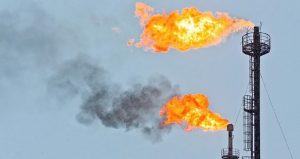 This post was originally published in The Dallas Morning News
This post was originally published in The Dallas Morning News
After months of promising talk about curbing the oil and gas industry’s wasteful and polluting flaring habit, the Texas Railroad Commission unveiled a plan that does little to fix the problem. Despite calls from mineral owners, the public and even some in the industry itself to end routine flaring, the commission instead embraced largely empty measures advanced by an oil and gas trade group.
Flaring, setting fire to natural gas produced as an oil byproduct, is a colossal waste of resources and releases both carbon dioxide and methane into the atmosphere. In recent years, the Railroad Commission has served as little more than a rubber stamp for oil and gas flaring in Texas. Since 2013, operators have obtained 35,000 flaring permits without a single denial.
But in February, Commission Chair Ryan Sitton released the agency’s first-ever report on flaring and suggested that overdue change was on the way. The issue quickly arose again during high-profile hearings about collapsing oil prices.
Reducing flaring isn’t rocket science. Exxon Mobil claims it lowered its flaring intensity in the Permian Basin to 1%, saying the experience “demonstrates that zero routine flaring is within everyone’s reach.” They used new equipment to capture emissions, completing wells only when gas takeaway capacity existed, and shutting in production during prolonged equipment malfunctions.
Chevron, Occidental, Pioneer Natural Resources and many other operators have recently initiated programs to reduce flaring and are reporting flaring reductions.
Eliminating routine flaring is not merely an environmentalist dream. Many of the industry’s financial backers view the practice as inefficient and indicative of poor operational oversight. Many investors are worried about competition from cleaner sources, frustrated with dwindling returns and alarmed by the material risks of climate change.
The commission’s new proposal aims to collect better data and offers guidelines and time limits for initial flaring permits. Notably, it does not stop companies coming back for endless extensions, as they do now. This wouldn’t be a bad starting point for a comprehensive plan. Unfortunately, it seems to be where the effort is stopping.
Texas needs concrete industry objectives along with sensible policy to solve this issue once and for all.
Texas oil and gas regulators offer a weak fix to flaring Share on XKey steps include:
Establish a clear goal to end routine flaring by 2025, which gives companies ample time to adapt. Track progress with interim targets. Similar to other states, Texas’ goals should include gas capture and targets for each company that increase yearly.
Companies apply for long-term exemptions that allow them to flare at wells for years at a time. The commission needs to end the widespread granting of these exemptions.
The commission is asking companies to start collecting preliminary data, which is a good start. But it needs to go much further, making data transparent and accessible to all stakeholders. An audit mechanism is also needed to verify data accuracy and operator compliance.
Achieving zero routine flaring by 2025 is possible with effective operational, financial and environmental policy standards. As called upon by investors, communities and portions of the industry, action is long overdue, and now is the time for targeted enforcement and engagement.









